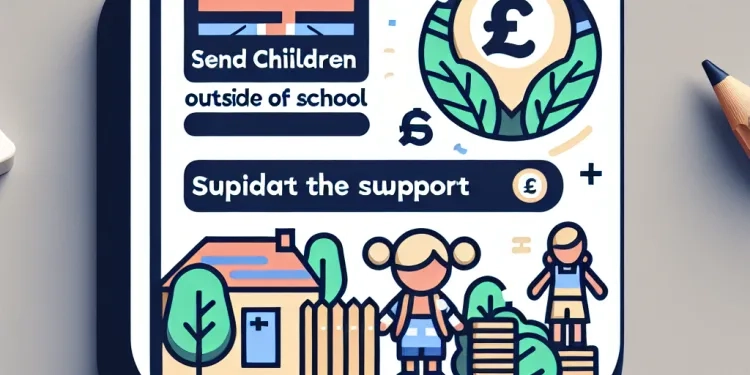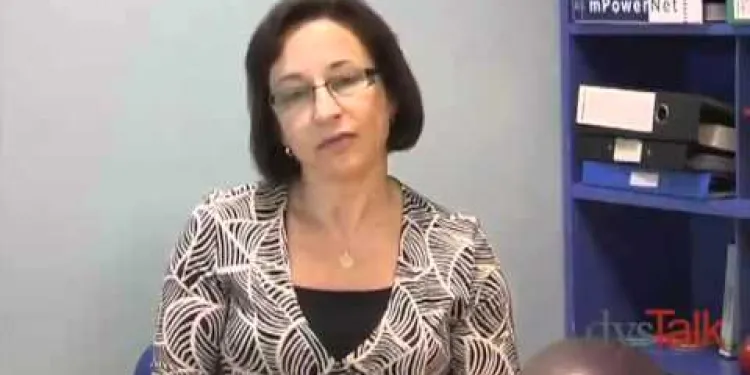
Find Help
More Items From Ergsy search
-

Do SEND children attend mainstream schools?
Relevance: 100%
-

What are SEND children?
Relevance: 64%
-

Who are SEND children?
Relevance: 60%
-

What support is available for SEND children in schools?
Relevance: 59%
-

Can SEND children access extracurricular activities?
Relevance: 58%
-

Are there specific laws governing SEND in schools?
Relevance: 55%
-

How can schools create an inclusive environment for SEND children?
Relevance: 54%
-

What support is available outside of school for SEND children?
Relevance: 53%
-

What are some common misconceptions about SEND?
Relevance: 49%
-

How is progress measured for SEND children?
Relevance: 48%
-

What role do teachers play in supporting SEND children?
Relevance: 41%
-

Can children with disabilities access school meals?
Relevance: 41%
-

What does SEND stand for?
Relevance: 37%
-

How are parents involved in the SEND process?
Relevance: 37%
-

How do funding and resources affect SEND support?
Relevance: 36%
-

Can SEND status change over time?
Relevance: 34%
-

Who is responsible for assessing SEND needs?
Relevance: 34%
-

What is the SENCO's role in a school?
Relevance: 33%
-

What are some common types of SEND?
Relevance: 29%
-

How are school meals provided in the UK?
Relevance: 29%
-

See4School
Relevance: 29%
-

Are school meals free for all students in the UK?
Relevance: 27%
-

Who is responsible for providing school meals in the UK?
Relevance: 27%
-

What is the purpose of providing school meals in the UK?
Relevance: 27%
-

What is the average cost of a school meal in the UK?
Relevance: 27%
-

Dyspraxia Children: How to Help
Relevance: 26%
-

Can I send money to an inmate?
Relevance: 25%
-

What is included in a typical school meal in the UK?
Relevance: 25%
-

Who provides the funding for free school meals in the UK?
Relevance: 25%
-

How can parents advocate for their SEND child?
Relevance: 24%
-

How are food allergies managed in UK schools?
Relevance: 24%
-

Are there educational components to the school meal program?
Relevance: 24%
-

What criteria must be met for a child to be eligible for free school meals?
Relevance: 24%
-

How do I send books or magazines?
Relevance: 24%
-

Are school meals inspected for quality and standards?
Relevance: 24%
-

Can I go to work or school if I have norovirus?
Relevance: 24%
-

Children's Vaccination Schedule
Relevance: 24%
-

How can I identify if my child has SEND?
Relevance: 23%
-

Understanding Mental Health in Children
Relevance: 23%
-

Why does my email appear to be sending spam?
Relevance: 23%
Understanding SEND
The term SEND stands for Special Educational Needs and Disabilities. In the UK, children with SEND have a wide range of learning difficulties or disabilities that impact their ability to learn. They may need different or additional support compared to other children of the same age. SEND can encompass challenges such as physical disabilities, learning difficulties, mental health issues, and sensory impairments.
Mainstream Schools and Inclusion
Mainstream schools in the UK refer to primary or secondary schools that cater to students of all abilities. The UK education system promotes an inclusive approach, aiming to provide SEND children with an opportunity to learn alongside their peers. The principle behind inclusion is to ensure that those with special educational needs can access the same opportunities and resources as others, fostering a sense of community and acceptance.
Legislation and Policies
The UK has several policies in place to support the inclusion of SEND children in mainstream schools. The Children and Families Act 2014 and the Special Educational Needs and Disability Code of Practice outline the rights and provisions for SEND children. Under these regulations, schools are required to identify and address the needs of SEND students, providing tailored support to facilitate their learning.
Support Mechanisms in Mainstream Schools
To accommodate SEND students, mainstream schools in the UK offer various forms of support. This may include having Special Educational Needs Coordinators (SENCOs) who oversee the development and implementation of support plans. Schools may also employ teaching assistants who work closely with SEND children, providing additional guidance and help. Personalized Education Plans (PEPs) are often drawn up to ensure the specific needs of each child are met effectively.
Benefits of Mainstream Education for SEND Children
Attending mainstream schools can offer significant benefits for SEND children. It encourages social interaction and integration, helping children develop communication and interpersonal skills within a diverse environment. Moreover, mainstream education exposes SEND students to a broader curriculum and a stimulating educational setting, which can foster growth and development.
Challenges of Inclusion
While the intent of inclusive education is positive, there are challenges that must be addressed. Mainstream schools may face resource limitations, such as insufficient funding and training, which can affect their ability to meet the diverse needs of SEND students. Teachers may require additional training to effectively support SEND students, and schools must balance this with other educational demands.
Conclusion
In conclusion, many SEND children do attend mainstream schools in the UK, supported by comprehensive policies and dedicated educational frameworks. While there are undeniable benefits, ensuring the success of inclusive education requires ongoing commitment and resources. It remains crucial to continue enhancing support systems and training to provide equitable learning experiences for all students.
Understanding SEND
SEND stands for Special Educational Needs and Disabilities. In the UK, some children have SEND, which means they might find learning harder. They might need extra help in school. SEND can include things like having trouble learning, having a physical disability, or facing mental health challenges. Some children may also have problems seeing or hearing.
Mainstream Schools and Inclusion
In the UK, most children go to schools called mainstream schools. These schools are for all children. The UK wants children with SEND to learn with other kids in these schools. This is called inclusion. Inclusion means making sure all kids can learn together and have the same chances to do well.
Legislation and Policies
The UK has rules to help children with SEND. The big rules are the Children and Families Act 2014 and the Special Educational Needs and Disability Code of Practice. These rules say schools must help children with SEND. Schools must make sure these children get the help they need to learn.
Support Mechanisms in Mainstream Schools
Schools in the UK do many things to help children with SEND. Many have Special Educational Needs Coordinators (SENCOs). These are people who make sure students get the help they need. Schools also have teaching assistants who work with children with SEND. Each child with SEND might have a Personalized Education Plan (PEP) to help them learn.
Benefits of Mainstream Education for SEND Children
Going to a mainstream school can be great for children with SEND. They can make friends and learn how to talk and play with others. They can learn many different things and be in a lively school setting. This helps them grow and learn new skills.
Challenges of Inclusion
Inclusion is a good idea, but it can be tough. Schools might not have enough money or training to help all SEND children well. Teachers may need more training to help SEND students and still have to focus on other children too.
Conclusion
Many children with SEND go to mainstream schools in the UK. They have rules and plans to help them. While there are many good things about going to mainstream schools, we need to keep working hard to make it better. It's important to help every child learn and do well at school.
Frequently Asked Questions
What does SEND mean?
SEND stands for Special Educational Needs and Disabilities.
Can children with SEND attend mainstream schools?
Yes, children with SEND can attend mainstream schools if it suits their educational needs.
Are there any legal provisions for SEND children in mainstream schools?
Yes, there are legal frameworks like the Equality Act 2010 in the UK that protect the rights of SEND children in mainstream schools.
Do mainstream schools provide support for SEND children?
Mainstream schools are required to provide support for children with SEND to help them learn effectively.
What kind of support is available for SEND children in mainstream schools?
Support may include individualized education plans, teaching assistants, and specialized resources.
How do schools identify if a child has SEND?
Schools use observations, assessments, and input from parents and specialists to identify SEND.
Can parents choose a mainstream school for their SEND child?
Yes, parents can choose a mainstream school if they believe it is the best option for their child.
Do teachers in mainstream schools receive training for SEND?
Yes, teachers receive training to support and understand the needs of SEND students.
Is there a limit to how many SEND students can be in a mainstream class?
There is typically no set limit, but schools need to ensure they can meet all students' needs effectively.
What are the benefits of SEND children attending mainstream schools?
Benefits include social integration, access to a broad curriculum, and interaction with diverse peers.
Are there specialized staff for SEND children in mainstream schools?
Many mainstream schools employ special educational needs coordinators (SENCOs) and other support staff.
How do mainstream schools ensure inclusivity for SEND students?
Schools adopt inclusive practices, provide necessary accommodations, and create an accepting environment.
Can SEND students transition to mainstream schools from special schools?
Yes, transitions can occur if it's in the best interest of the student and appropriate support is available.
Do mainstream schools offer therapies for SEND children?
Some mainstream schools may offer or facilitate access to therapies such as speech or occupational therapy.
How is progress monitored for SEND children in mainstream schools?
Progress is monitored through regular assessments, reviews, and updated individualized plans.
Are mainstream schools inspected on their provision for SEND students?
Yes, schools are inspected on their SEND provision, including how they support these students.
What challenges might SEND children face in mainstream schools?
Challenges can include adapting to larger class sizes, potential social integration issues, and ensuring sufficient support.
What is an EHCP and how does it relate to SEND children in schools?
An Education, Health and Care Plan (EHCP) outlines a child's needs and the support required, aiding SEND students in schools.
Can families seek additional help if a mainstream school isn’t meeting their child's needs?
Yes, families can work with the school or local authorities to seek additional support or consider alternative schooling options.
What role do parents play in supporting SEND students in mainstream schools?
Parents play a crucial role by collaborating with schools, advocating for their children's needs, and supporting learning at home.
What is SEND?
SEND means "Special Educational Needs and Disabilities."
It is for children who need extra help in school.
Some children find it hard to learn things.
Schools have ways to help these children.
Tools like pictures or videos can help students understand better.
SEND means Special Educational Needs and Disabilities.
Can children with SEND go to regular schools?
Yes, children with SEND (Special Educational Needs and Disabilities) can go to regular schools. Here are some ways schools help:
- Extra help from teachers.
- Special tools and support.
- Extra time for learning.
It's important for parents and teachers to work together to make sure each child gets the right help.
Yes, children with SEND (Special Educational Needs and Disabilities) can go to regular schools if it is good for their learning.
Do schools have rules to help SEND children?
Yes, there are rules to help children with SEND (Special Educational Needs and Disabilities) in regular schools. These rules help make sure SEND children get what they need at school.
If you want to know more or need help, try asking a teacher or using a special app that reads out loud. They can help explain things better.
Yes, there are laws like the Equality Act 2010 in the UK. These laws help keep SEND children safe in regular schools.
Do regular schools help children with special needs?
Do regular schools give help to children with SEND (Special Educational Needs and Disabilities)?
If a child needs extra help to learn, regular schools can sometimes give this help.
There are people in the school who can work with children that need extra support.
Teachers may use special tools, like picture cards or simple charts, to help them learn better.
Parents can talk to teachers to see what help is available.
All schools must help children with SEND learn better.
What help do children with SEND get in regular schools?
Children with SEND (Special Educational Needs and Disabilities) can get help in regular schools. Here are some ways they get support:
- Extra Help from Teachers: Teachers can spend more time with SEND children to help them learn.
- Teaching Assistants: Some schools have helpers who work with SEND children during classes.
- Special Tools: There are tools like computers or special books that make learning easier.
- Special Plans: Schools can make a learning plan just for the child to help them do their best.
- Friends Help: Schools might have programs to pair up SEND children with buddies.
If you want to know more or need extra help, talk to a teacher or ask at the school.
Support can include special plans for learning, helpers in the classroom, and special tools for learning.
How do schools know if a child needs extra help?
Schools watch how children learn and play. If a child finds things hard, teachers will notice. Teachers might: - Talk with the child. - Chat with parents or carers. - Use special tests to see if a child needs support. If a child needs extra help, teachers and helpers will work together to make learning easier. If you need help: - Ask a teacher or friend. - Try using colored overlays or reading apps to make reading simpler.Schools find out about SEND by watching students, giving them tests, and talking with parents and experts.
Can parents choose a regular school for their child with SEND?
Yes, parents can choose a regular school for their child with SEND (Special Educational Needs and Disabilities).
Here are some helpful tips:
- Talk to the school about your child's needs.
- Visit the school to see if it's a good fit.
- Ask about extra help the school can offer.
- Bring someone to meetings for support.
These steps can help you decide if a regular school is the best choice for your child.
Yes, parents can pick a regular school if they think it is the best choice for their child.
Do teachers in regular schools learn how to help students with SEND?
SEND means Special Educational Needs and Disabilities.
Teachers in regular schools learn how to help students with SEND.
This training helps teachers know how to support all students.
Sometimes, teachers go to special classes to learn more.
Extra tools like pictures and simple words can help with learning.
Yes, teachers learn how to help and understand children with special needs.
Can there be a maximum number of SEND students in a regular class?
SEND means students with Special Educational Needs and Disabilities.
A regular class is a normal school class with children of all abilities.
Sometimes, there are rules about how many SEND students can be in a regular class.
But these rules can change. They can be different in some schools or places.
To find out, it is good to ask the school or a teacher.
If you want help, you can use tools like text-to-speech to read the words out loud.
You can also ask someone to read it with you.
Schools don't usually have a set number for how many students they can help. But, it is important that schools can take care of all the students well.
What are the good things about SEND children going to regular schools?
SEND children are kids with special needs. When they go to regular schools, they can learn many new things.
Here are some good things:
- They can make new friends.
- They learn how to play and work with all kinds of kids.
- They get to do the same fun activities as other kids.
- Teachers can help them learn in different ways that work best for them.
Some helpful tools and tips:
- Using pictures and videos can make learning easier.
- Break tasks into small steps.
- Repeat things to help remember.
Good things about this include making friends, learning lots of different subjects, and meeting many different kids.
Do schools have special helpers for children with SEND?
Yes, many regular schools have special helpers. These helpers work with children who need extra support. They help children learn and feel included. If you want more support, you can ask for it.
Here are some things you can use for help:
- Special learning tools like computers or tablets.
- Extra time to finish work.
- Quiet places to take breaks.
Many regular schools have special teachers called SENCOs. These teachers help children who need extra support.
How do schools make sure all children, including those with SEND, feel included?
SEND means Special Educational Needs and Disabilities. It is important for schools to help all children learn and play together.
Here are some ways schools can help:
- Teachers use simple words so everyone can understand.
- Schools have special helpers for kids who need extra support.
- Children might have different work that suits how they learn.
- Schools have ramps and special toilets if needed.
- There are tools like iPads or headphones to help learning.
It’s also good for children to talk to each other and make friends.
Schools help all kids feel welcome. They make changes to help everyone join in. They also create a kind and friendly place.
Can SEND students move to regular schools from special schools?
Yes, SEND students can move from special schools to regular schools.
Parents and teachers can talk together. They will check if the student is ready.
If you want more help:
- Ask for a meeting with school staff.
- Use picture charts to plan steps.
- Try practice days at the new school.
Yes, changes can happen if they are good for the student and if there is help to support them.
Do regular schools help SEND children with special support?
Do regular schools give extra help for SEND children? SEND means Special Educational Needs and Disabilities. This means a child might learn in a different way.
Here are some things regular schools can do to help SEND children:
- Special teachers to help in class.
- Speech and language therapy to help talking.
- Occupational therapy to help with daily tasks.
- Counseling to talk about feelings.
Some schools have these helpers. You can ask the school what they have for SEND children.
Parents can use tools like:
- Visual schedules to show what happens next.
- Apps to help with learning.
- Calming toys to help with focus.
If a child needs more help, parents can ask for advice from experts.
Some regular schools may help kids get therapies like speech therapy or occupational therapy.
How do schools check progress for SEND children?
Schools want to help all kids learn and do well, especially children with special educational needs and disabilities (SEND). Here’s how they check progress:
1. **Regular Check-ins:** Teachers and helpers talk with SEND children to see how they are doing.
2. **Special Plans:** Some children have a special learning plan called an IEP (Individual Education Plan) that sets goals and tracks progress.
3. **Parent Meetings:** Schools meet with parents to talk about how well their child is doing and what they might need help with.
4. **Tools to Help:** Schools might use pictures, videos, or fun activities to make learning easier.
If you have questions, it's a good idea for parents to talk to the teachers. Teachers are always ready to help!
We check how things are going by doing regular tests, having meetings, and making new plans just for you.
Do schools check how they help children with SEND?
These are schools for everyone. We need to know if they are good at helping children with special educational needs and disabilities (SEND).
Here is how we can find out:
- Look at school reports. They tell us how the school is doing.
- Use reading tools that can read things aloud.
- Ask someone to explain if you don't understand.
Yes, schools are checked to see how they help students with special educational needs and disabilities (SEND).
What problems do SEND children have in regular schools?
Some kids need extra help at school. We call these kids SEND. Here are some problems they might have:
- Finding it hard to keep up with lessons.
- Having a tough time making friends.
- Getting upset or worried easily.
- Needing extra help with reading, writing, or numbers.
To help these kids, teachers can:
- Use pictures and easy words.
- Let kids take breaks when needed.
- Use games and fun ways to learn.
- Be kind and patient.
Parents can also ask teachers for help if needed.
It can be hard when there are more kids in the class, making friends, and getting enough help.
What is an EHCP for children with SEND in schools?
An EHCP is a plan that helps children with special needs at school.
SEND means Special Educational Needs and Disabilities.
The plan tells how to help the child learn better.
Teachers use the plan to give the right support.
Support tools can be: Talking, writing, or drawing together.
An Education, Health and Care Plan (EHCP) is a document. It says what help a child needs. It is for children who need extra support in school.
Can families get more help if a regular school isn’t right for their child?
Families can get extra help if a regular school isn’t right for their child. Here are some things they can do:
- Talk to the teacher or principal about what their child needs.
- Ask for a meeting to plan better support at school.
- Look for extra programs or help that the school might offer.
- Contact a local support group for advice and help.
- Consider a special school or program if needed.
Using simple tools like picture schedules or learning apps can also help the child.
Yes, families can talk to the school or local council to get help. They can also look at other schools if needed.
How can parents help children with SEND in regular schools?
Parents can do a lot to help their children with Special Educational Needs and Disabilities (SEND) at regular schools.
Here are some ways parents can help:
- Talk with Teachers: Parents can talk to teachers to understand how they can support their child’s learning.
- Stay Involved: Parents can attend school meetings and events to know what is happening at school.
- Help with Homework: Parents can set a regular time and quiet place for homework and help when needed.
- Use Tools: Parents can use tools like planners to help their child stay organized.
- Encourage Learning: Parents can encourage their child by praising their efforts and celebrating achievements.
Parents can also ask teachers about special resources or support available for their child at school.
Parents have an important job. They work with schools, speak up for their children's needs, and help with learning at home.
Useful Links
- Ergsy carfully checks the information in the videos we provide here.
- Videos shown by Youtube after a video has completed, have NOT been reviewed by ERGSY.
- To view, click the arrow in centre of video.
- Most of the videos you find here will have subtitles and/or closed captions available.
- You may need to turn these on, and choose your preferred language.
- Go to the video you'd like to watch.
- If closed captions (CC) are available, settings will be visible on the bottom right of the video player.
- To turn on Captions, click settings .
- To turn off Captions, click settings again.
More Items From Ergsy search
-

Do SEND children attend mainstream schools?
Relevance: 100%
-

What are SEND children?
Relevance: 64%
-

Who are SEND children?
Relevance: 60%
-

What support is available for SEND children in schools?
Relevance: 59%
-

Can SEND children access extracurricular activities?
Relevance: 58%
-

Are there specific laws governing SEND in schools?
Relevance: 55%
-

How can schools create an inclusive environment for SEND children?
Relevance: 54%
-

What support is available outside of school for SEND children?
Relevance: 53%
-

What are some common misconceptions about SEND?
Relevance: 49%
-

How is progress measured for SEND children?
Relevance: 48%
-

What role do teachers play in supporting SEND children?
Relevance: 41%
-

Can children with disabilities access school meals?
Relevance: 41%
-

What does SEND stand for?
Relevance: 37%
-

How are parents involved in the SEND process?
Relevance: 37%
-

How do funding and resources affect SEND support?
Relevance: 36%
-

Can SEND status change over time?
Relevance: 34%
-

Who is responsible for assessing SEND needs?
Relevance: 34%
-

What is the SENCO's role in a school?
Relevance: 33%
-

What are some common types of SEND?
Relevance: 29%
-

How are school meals provided in the UK?
Relevance: 29%
-

See4School
Relevance: 29%
-

Are school meals free for all students in the UK?
Relevance: 27%
-

Who is responsible for providing school meals in the UK?
Relevance: 27%
-

What is the purpose of providing school meals in the UK?
Relevance: 27%
-

What is the average cost of a school meal in the UK?
Relevance: 27%
-

Dyspraxia Children: How to Help
Relevance: 26%
-

Can I send money to an inmate?
Relevance: 25%
-

What is included in a typical school meal in the UK?
Relevance: 25%
-

Who provides the funding for free school meals in the UK?
Relevance: 25%
-

How can parents advocate for their SEND child?
Relevance: 24%
-

How are food allergies managed in UK schools?
Relevance: 24%
-

Are there educational components to the school meal program?
Relevance: 24%
-

What criteria must be met for a child to be eligible for free school meals?
Relevance: 24%
-

How do I send books or magazines?
Relevance: 24%
-

Are school meals inspected for quality and standards?
Relevance: 24%
-

Can I go to work or school if I have norovirus?
Relevance: 24%
-

Children's Vaccination Schedule
Relevance: 24%
-

How can I identify if my child has SEND?
Relevance: 23%
-

Understanding Mental Health in Children
Relevance: 23%
-

Why does my email appear to be sending spam?
Relevance: 23%